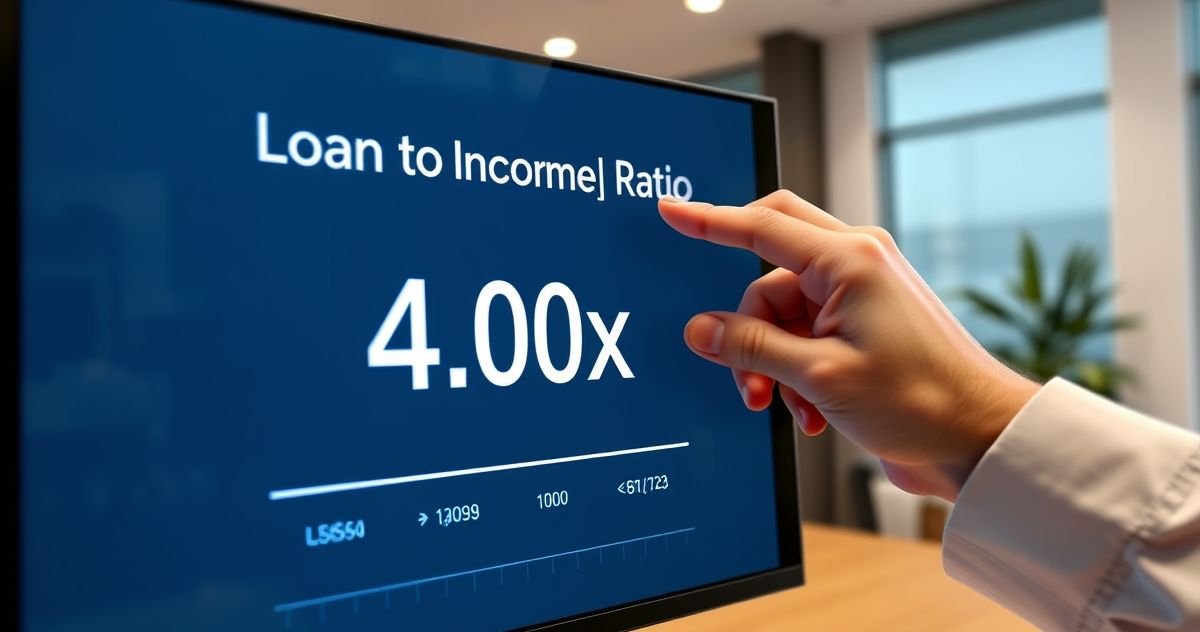The Loan-to-Income (LTI) ratio is a straightforward financial measure lenders use to evaluate whether the size of a loan is reasonable compared to your annual income. Unlike the Debt-to-Income (DTI) ratio, which focuses on your monthly debt payments, the LTI ratio looks at your overall loan burden relative to yearly earnings.
How LTI Is Calculated
LTI ratio = Total Loan Amount ÷ Gross Annual Income
For example, if you earn $150,000 annually and apply for a $600,000 mortgage, your LTI ratio is 4x ($600,000 ÷ $150,000). This means the loan is four times your yearly income.
Why Lenders Use the LTI Ratio
Lenders use the LTI ratio as an initial risk assessment tool to understand if the total loan amount is sustainable given your income. A very high LTI ratio might indicate a borrower is taking on too much debt, increasing the risk of default if financial circumstances change.
This metric also helps regulators monitor housing market risk to avoid issues like the 2008 financial crisis. While the U.S. does not have strict government limits on LTI, lenders set internal thresholds to minimize lending risk.
LTI vs. DTI: Understanding the Difference
- LTI (Loan-to-Income): Measures the total loan amount as a multiple of your annual income — the big-picture view.
- DTI (Debt-to-Income): Measures monthly debt payments as a percentage of monthly income — the cash flow perspective.
Both ratios are essential in mortgage underwriting. Learn more about Debt-to-Income Ratio for insights on managing monthly debt obligations.
| Feature | LTI Ratio | DTI Ratio |
|---|---|---|
| What It Measures | Loan amount compared to annual income | Monthly debt payments compared to monthly income |
| Calculation | Total loan ÷ gross annual income | Total monthly debt ÷ gross monthly income |
| Focus | Overall loan size and affordability | Monthly payment ability and cash flow |
What Is a Good LTI Ratio?
While not formally regulated in the U.S., general lending guidelines consider:
- Up to 3.5x as conservative and low risk
- Around 4.5x commonly accepted for many loans
- Above 5.0x often high risk, requiring excellent credit and down payment
How to Improve Your LTI Ratio
- Increase your down payment to reduce the loan amount
- Choose a less expensive home
- Boost your documented income with raises or additional sources
- Add a co-borrower to combine incomes
Frequently Asked Questions
Is LTI more important than DTI? In the U.S., DTI is often the primary standard for mortgage approval, but lenders also use LTI internally to assess overall loan risk. Both work together to determine eligibility.
Can a high LTI prevent loan approval? Yes. Even with a low DTI and good credit, an excessively high LTI can lead lenders to reject applications due to long-term repayment risk.
Do all lenders use LTI? Most mortgage lenders incorporate LTI in underwriting, though specific limits vary.
For more details, see Consumer Financial Protection Bureau on DTI.
Sources:
- Forbes Advisor: Loan-to-Income Ratio
- Investopedia: Loan-to-Income (LTI) Ratio
- Consumer Financial Protection Bureau – for related ratios and mortgage standards



